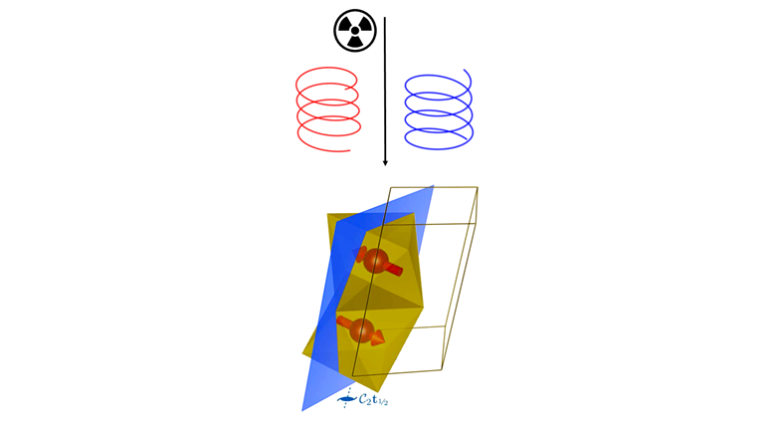An international team of physicists from Masaryk University, the Czech Academy of Sciences (CAS), the Osaka Metropolitan University, and the University of Nottingham have completed a groundbreaking experiment with magnets that confirmed a theoretical prediction from several months ago. The experiment involved the particular properties of so-called “altermagnets” – externally non-magnetic materials that can manifest magnetic properties under specific conditions.
The phenomenon that was observed is called magnetic circular dichroism, and is based on the fact that the absorption of light varies according to the polarisation of the light used. This phenomenon is commonly used to study ordinary magnetism (ferromagnets).
What makes the discovery unique is that dichroism has now been observed for the first time in an externally non-magnetic material whose magnetic moments (the measure of the object’s tendency to align with a magnetic field) are all parallel, specifically in an altermagnet formed by a thin layer of manganese telluride (MnTe).
“While in a ferromagnet the magnetic moments of the individual atoms point in the same direction, in an altermagnet their orientation alternates, so the material appears to be non-magnetic on the outside,” explained Jan Kuneš from the Institute of Condensed Matter Physics at MUNI’s Faculty of Science.
Altermagnets were previously identified by scientists of the CAS Institute of Physics. A theoretical prediction and a quantum mechanical calculation of the wavelength dependence of the X-ray radiation was then carried out by Atsushi Hariki of Osaka Metropolitan University.
In order to experimentally confirm their calculations and theories, the scientists prepared thin layers of MnTe at the University of Nottingham and transported them under ultra-high vacuum almost 200 kilometres to the British National Laboratory’s Diamond Light Source synchrotron X-ray facility near Oxford.
A synchrotron device can be visualised as a circle with a circumference of hundreds of metres in which electrons can be accelerated to close to the speed of light, producing intense radiation, such as X-rays. Physicists exposed a layer of manganese telluride to this radiation and gradually changed the wavelength of the radiation. They then measured the differences in the absorption of right-handed and left-handed polarised light.
“When the signal in the spectra emerged from the background noise, it agreed remarkably well with the theoretical prediction,” said British physicist Kevin Edmonds from the University of Nottingham.
“The experiments carried out in the synchrotron not only confirmed the theoretical prediction but also represent the world’s first observation of this phenomenon,” explained Kuneš, co-author of the theoretical part of the research.
In recent years, scientists from the CAS Institute of Physics have devoted themselves to the study of linear dichroism in manganese telluride. It can be present in all types of magnets, but they recently discovered that manganese telluride belongs to a family of altermagnets that exhibit phenomena previously attributed only to ferromagnets, including circular dichroism.
“Thanks to the combination of linear and circular dichroism, we can now determine the magnetic ordering in a manganese telluride sample using an X-ray microscope with nanometer resolution. In magnets, which are not excited by an external magnetic field and which are much more common in nature than ferromagnets, this opens up a completely new possibility of their detailed microscopic study,” said Karel Výborný and Tomáš Jungwirth from the CAS Institute of Physics.
The confirmed theoretical prediction of dichroism will thus enable microscopic material diagnosis, for example, of future spintronic nanoparticles based on altermagnets.
Thanks to their properties, altermagnets could be employed in the future in the production of electronic components. “They could have a very practical use in the production of chips that would be more resistant to magnetic fields and possible deterioration,” said Kuneš.
The so-called spintronic nanoparticles based on altermagnets could then bring elements with a significantly higher speed of processes. Spintronics is already used in the scanner heads of some electronic devices and magnetoresistive RAMs.
The international team reported on their research and observations in the renowned U.S. journal Physical Review Letters.









